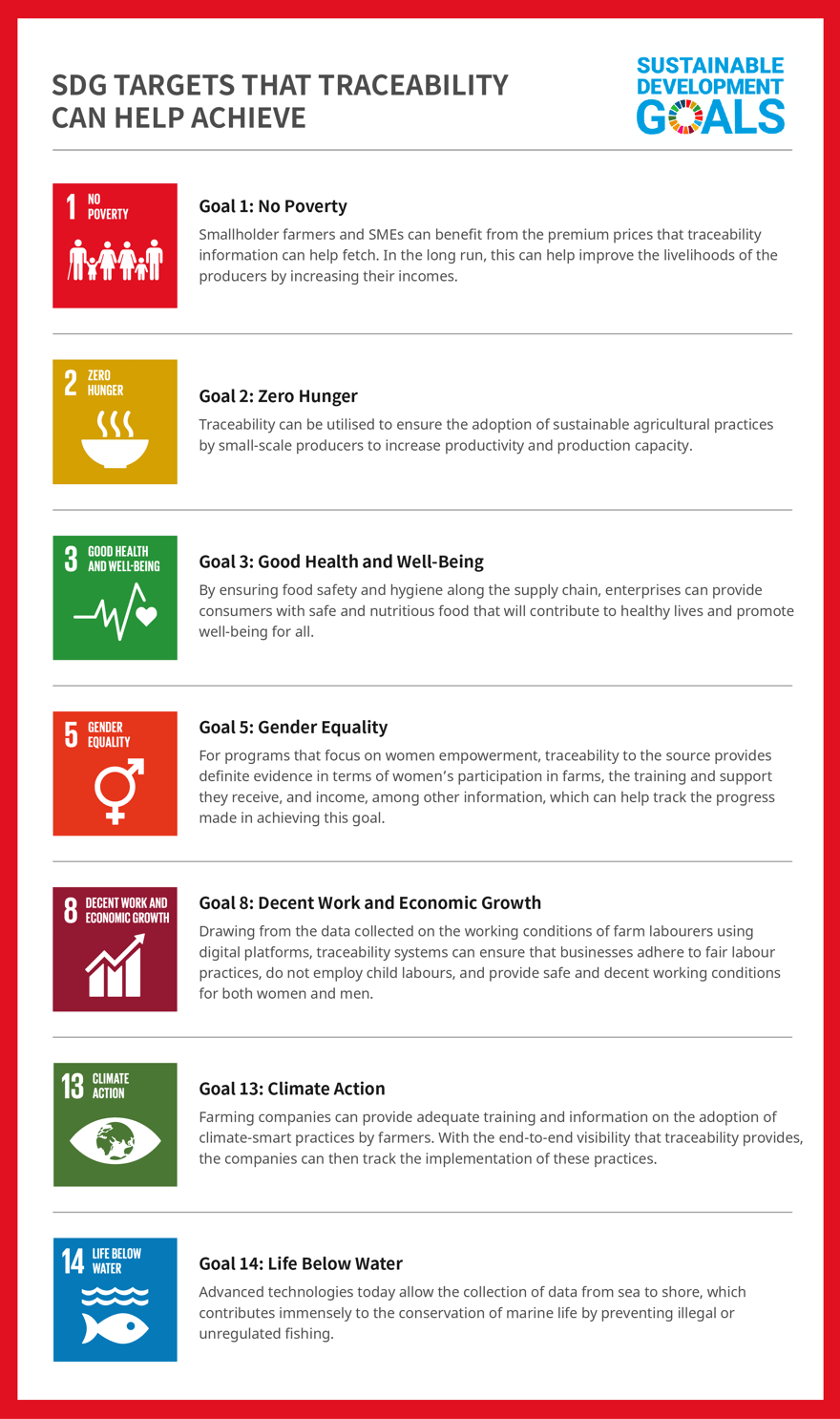Our food systems are continually evolving, more now than ever, to feed a growing population. However, several challenges face the Agri ecosystem’s attempts to produce enough to meet the global demand for nutritious food, such as deficient crop yields, broken supply chains, and excessive food wastage, among many others.
Overcoming these hurdles requires the collaboration of all stakeholders, woven together with transformative technology solutions to ensure a sustainable, food-secure future. Against this background, traceability in agriculture is being recognized by agri-food producers as one such technology solution that provides the foundation to identify and address food system challenges.
Traceability in agriculture provides significant benefits to the various stakeholders in the supply chain. For producers, specifically, these benefits could be operational efficiencies, better risk mitigation, improved access to global markets, and even contributing to achieving the Sustainable Development Goals (SDGs).
Let us take a closer look at the top seven benefits for agri-food producers.
1. Optimized Supply Chains
An evident advantage of digitizing supply chains is that it makes them traceable by creating a digital record of all activities and improves the capability to internally track and document all activities from production and harvest to warehousing and distribution.
Traceability in agriculture, therefore, makes the supply chain more transparent and offers better control over operations to all the stakeholders. It facilitates them to address pain points, such as food loss or wastage, and identify opportunities to accelerate processes and make them cost-effective.
2. Food Safety and Quality Compliance
One of the ways an effective food traceability system improves risk management is by enabling agribusinesses to implement a mechanism for safety and quality compliance. The visibility that such systems provide allows stakeholders in the supply chain to quickly identify vulnerabilities and reduce their response time to food crises, such as contamination or disease outbreaks.
3. Identification of deforestation risks in the Supply Chain
Global organizations that work towards ecosystem conservation can employ traceability and remote sensing to monitor issues such as deforestation. Gaurav Gupta, the Head of Conservation Landscape at WWF-Myanmar explains how the organization uses a digital platform to register natural rubber farmers in Myanmar along with information pertaining to their geospatial location, the crops they cultivate, and the farming practices they follow. All transactions starting from these farmers, all the way up to the international buyers, are then recorded in the system to map out the supply chain.
“This provides us [with an] incredible amount of data that is absolutely needed for us to monitor whether there is a system in place that incentivizes farmers to not do any further deforestation and well as to protect the no-go zones around their area. This gives us the power to also do geospatial monitoring.”
For instance, satellite monitoring and remote sensing technologies enable them to capture deforestation. “Once we register farmers in the system, we can overlay any new deforestation with the geospatial coordinates of the farmers. If there is any deforestation in the vicinity of the registered farmers, we can do further investigation. If farmers who have committed to sustainable production are responsible for the deforestation, they can be easily decoupled from the registered supply chain.”
4. Better Price Realization
Agriculture traceability systems that capture farm-level activities help producers to authenticate that they have met the standards set by certification bodies, particularly concerning the quality and safety of the product, fair labor practices, and the like. This helps them gain better access to local and international markets and negotiate higher prices for the quality assurance they provide. Several studies point to the fact that several consumers today are willing to pay extra for products with traceability information.
5. Strengthened Brand Equity
Considering that today’s consumers are highly aware and concerned about the safety of the products they buy, traceability plays an integral role in their purchasing decisions and, consequently, the trust they place in a brand or a product. Firstly, prompt and proactive actions on the part of the businesses during an emergency, as mentioned above, secures the consumers’ trust in the brand and their continued loyalty. Secondly, farm-to-shelf traceability systems also prevent illegal and fraudulent practices right from the source and contribute to accurate certification and product labeling. The certification will, in return, guarantee that the products are ethically sourced and fairly traded.
6. Improved Market Access
Be it for food processing companies committed to sourcing locally or for agribusinesses that strive to export domestically-produced commodities to international markets, producers can increase their marketability by employing traceability in agriculture. The information collected helps verify their product’s quality. This information is particularly beneficial when consumers opt for a product for its distinct qualities, such as its geographical indications (GI), sustainable/ethical production, its organic nature, or because it is a non-genetically modified food.
7. Contributing to the Sustainable Development Goals
Several enterprises are identifying the role of traceability systems in supporting their mission to achieve sustainable development goals. At its core, the traceable information associated with each individually-labeled product can guarantee that the product was produced, packaged, and distributed sustainably.
Farm to Fork- Empowering Agri-Food Supply Chains to achieve their full traceability potential
Agri-food supply chains are complex networks that span geographies and impact a broad range of industries and their operations. Implementing end-to-end traceability in agriculture contributes to more than just regulatory compliance or ensuring food safety. It lowers operational costs for producers, improves profitability, regulates fraudulent activities or unethical practices, and unlocks new business opportunities.
When stakeholders actively collaborate to implement a tech-enabled end-to-end traceability system, supply chains can achieve their full potential.
Watch this webinar to discover more about the applications of traceability in agriculture and some of the challenges it helps overcome.










